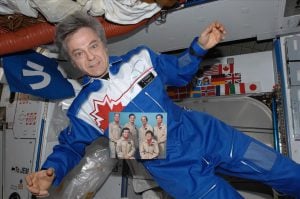
Exploration
Canadian Space Agency astronaut profiles
The men and women that have become part of Canada’s space team
- 1067 words
- 5 minutes
This article is over 5 years old and may contain outdated information.
Science & Tech

After a “perfect” launch from Cape Canaveral on September 8, NASA’s OSIRIS-REx spacecraft is on its way to near-earth object 1999 RQ36, also known as Bennu, with a piece of vital Canadian-designed technology on board.
The probe will spend two years orbiting Bennu, and as it does, a laser altimeter designed by Canadian company MacDonald Dettwiler and Associates with funding support from the Canadian Space Agency, will create 3D maps of the asteroid’s surface and identify the ideal spot to extract a ground sample. In exchange for its contribution, Canada will own four percent of the returned sample, which will be studied in Canada.
According to Dante Lauretta, principle investigator on the OSIRIS-REx project, Bennu is “a time capsule from the very dawn of our solar system,” potentially holding vital clues to the origins of life. Uncertainties in its orbit also mean there’s a small chance it could impact Earth late in the 22nd century, making it a prime candidate for NASA’s first visit to an asteroid.
Lauretta and team want to understand how both gravity and thermal energy from the sun may alter Bennu’s orbital path in order to more accurately predict the likelihood of a future collision with Earth.
The video below explains the mission in greater detail:
OSIRIS-REx is expected to reach Bennu by August 2018, and return to Earth in 2023. It’s a long time to wait for extraterrestrial treasure, but the Canadian and American scientists involved in the project are confident the results will be worth it.
Related: Three Canadian contributions to the Cold War ‘Space Race’
Are you passionate about Canadian geography?
You can support Canadian Geographic in 3 ways:

Exploration
The men and women that have become part of Canada’s space team

Exploration
The significant CSA events since Alouette’s launch

Science & Tech
Hansen will be part of the NASA crew for Artemis II, which will see the astronauts spending up to three weeks on a flyby trip to the moon in 2024

People & Culture
A celebration of the Canadian Coast Guard’s renowned search-and-rescue capabilities — and more — as the special operating agency turns 60